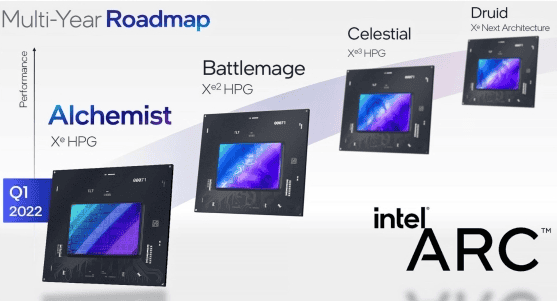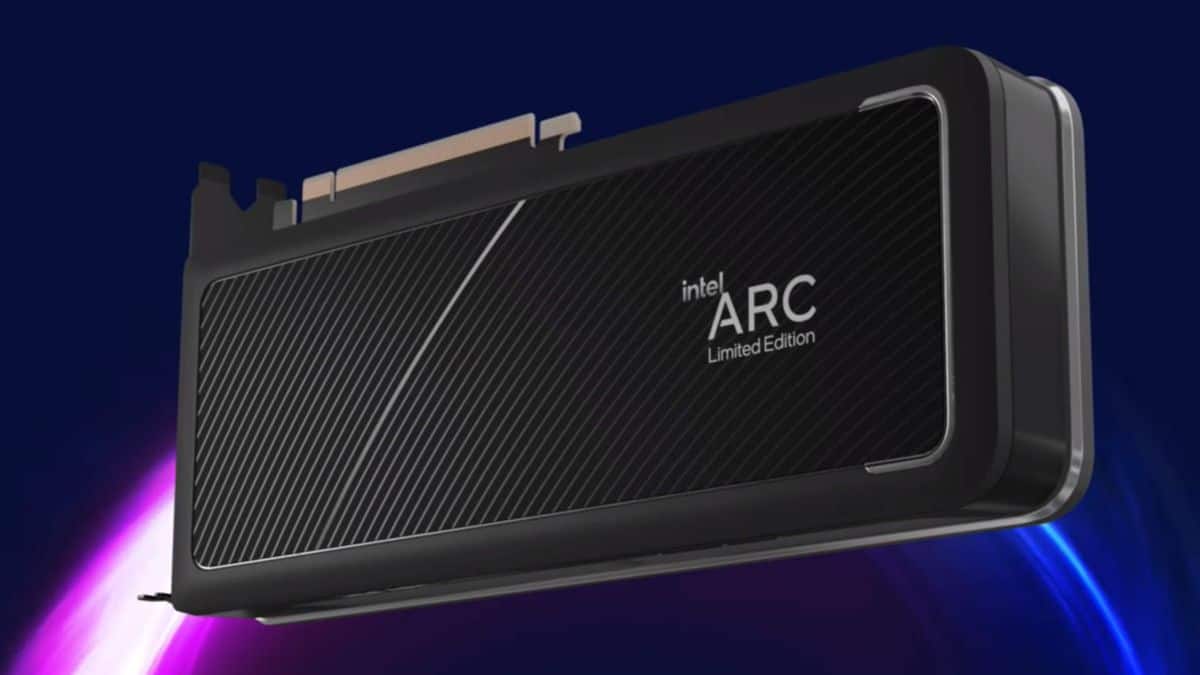Intel’s upcoming third generation Xe3 “Celestial” GPUs are quietly taking shape behind the scenes, and signs now point to a possible release window between late 2026 and early 2027. While Intel’s previous Arc GPU efforts—namely Alchemist and the newly released Battlemage—have served as stepping stones, Celestial represents Intel’s first real push into the high-end enthusiast market currently dominated by NVIDIA’s GeForce and AMD’s Radeon cards.
Intel Enters Pre-Silicon Validation Phase
According to recent reports, including confirmations from developer tools and partner documentation, the Xe3 Celestial GPUs have entered the pre-silicon validation phase. This is a critical milestone in chip development where the architecture is tested via simulation and emulation before physical silicon is manufactured. Intel is using virtual platforms to simulate performance, power management, and system compatibility, allowing engineers to debug potential issues without needing physical prototypes.

Notably, Intel finalized the Celestial architecture in December 2024, and is now working with OEMs and BIOS vendors to prepare for broader integration testing. This collaboration ensures the GPUs will be ready for a smoother rollout when manufacturing begins. The next major step is the tapeout phase, after which chips can be fabricated in volume.
What Will Celestial Bring to the Table?
Though Intel has kept detailed specs under wraps, Celestial is expected to be a clean-slate redesign aimed at true high-performance gaming and compute workloads. Here’s what we know or expect so far:
| Feature | Expected Details |
|---|---|
| Architecture | Xe3 “Celestial” (new from scratch) |
| Target Market | High-end/enthusiast GPUs |
| Node | Advanced process node (likely Intel 3 or external like TSMC N3) |
| Key Improvements | Ray tracing, AI acceleration, better driver maturity |
| Potential Use | Gaming, content creation, AI/ML workloads |
If Intel can deliver competitive performance-per-watt and price-to-performance ratios, Celestial could disrupt the $500+ GPU market, long considered impenetrable for new players.

Latest Intel Celestial Rumors
- Pre-Silicon Validation: As of early May 2025, the Xe3 Celestial discrete GPUs have reportedly entered the pre-silicon validation stage. This is a significant step where the GPU design and architecture are tested using software models and emulators before actual silicon production.
- Firmware and Power Management Ready: The firmware and power management for the pre-silicon model are reportedly ready, allowing Intel’s partners (OEMs and independent BIOS vendors) to begin virtual testing with their systems.
- Xe3P Architecture: There’s a rumor suggesting that the discrete Celestial GPUs might be based on an enhanced “Xe3P” architecture instead of the standard Xe3. The “P” is speculated to stand for “Performance,” indicating potentially significant performance improvements.
- Intel Foundry Manufacturing: Some reports suggest that Intel might be using its own Intel Foundry Services (IFS) to manufacture the Celestial GPUs, marking a shift from relying on TSMC (which was used for Alchemist and Battlemage).
- Targeting “Ultra Enthusiast” Segment: Intel has indicated that Celestial GPUs are aimed at the “ultra-enthusiast” market, suggesting they intend to compete with the high-end offerings from NVIDIA and AMD.
- Potential Release Timeline: If development progresses smoothly, some sources speculate that Celestial GPUs could enter production and be available to gamers within 12 to 18 months from early May 2025, potentially placing the launch around late 2025 or early to mid-2026. However, older information suggests a possible 2026 release.
- Integration with Panther Lake: Xe3 graphics are expected to be integrated into Intel’s Panther Lake CPUs, which are slated for release in the second half of 2025 or 2026. These integrated GPUs are rumored to have up to 12 Xe3 cores (or 128 EUs).
Expected Specifications and Performance (Based on Rumors and Industry Expectations):
- Process Node: Speculation points towards a 3nm process or lower, potentially utilizing Intel’s 18A lithography for discrete cards.
- Memory: GDDR7 memory is a possibility for Celestial GPUs, which would offer increased bandwidth.
- Performance Target: Aiming to compete with NVIDIA’s high-end cards (e.g., the Titan series or potentially RTX 5000 series) and AMD’s top-tier offerings.
- Features: Enhanced ray tracing capabilities, improved AI acceleration, higher core counts and clock speeds, and increased memory bandwidth are anticipated.
Important Considerations:
- Battlemage’s Role: The success of Intel’s current Arc Battlemage GPUs (specifically the higher-end SKUs which are yet to fully materialize) could influence the strategy and focus for Celestial.
- Driver Development: As with previous Intel Arc GPUs, the performance of Celestial will heavily rely on mature and well-optimized drivers. Intel has acknowledged the importance of software and is reportedly working on Xe3 drivers.
It’s crucial to remember that these are largely rumors and speculations. Intel has not officially confirmed the specifications or release dates for the Xe3 Celestial GPUs. However, the recent news of reaching the pre-silicon validation stage indicates that development is progressing.
The Road So Far: Alchemist and Battlemage
Intel’s discrete GPU journey hasn’t been without missteps. The Arc Alchemist (A-series) GPUs launched in 2022 to mixed reviews—praised for price and AV1 support but criticized for immature drivers and inconsistent performance. The newly released Battlemage (B-series), which began rolling out in 2025, has started to change that narrative with better drivers, performance refinements, and wider support across titles.
Celestial represents the third major Arc generation:
| Generation | Code Name | Release Window | Focus |
|---|---|---|---|
| 1st Gen | Alchemist | 2022 | Entry/Mid-tier gaming |
| 2nd Gen | Battlemage | 2025 | Mid-to-high tier |
| 3rd Gen | Celestial | 2026–2027 | Enthusiast-level gaming |
This evolutionary roadmap shows Intel isn’t treating GPUs as a side project—it’s building a serious long-term play.
Competing With Giants
With NVIDIA’s RTX 50-series on the horizon and AMD’s RDNA 4 also expected around the same time, Intel’s Celestial GPUs will face stiff competition. However, Intel has a few advantages to lean on:
- Deep integration with CPUs and motherboards (leveraging its ecosystem)
- In-house fabs for potential vertical optimization
- AV1 and AI-first feature adoption ahead of rivals
- Driver maturity improving with each release
If Celestial can deliver on performance while maintaining strong value, Intel could become a legitimate third pillar in the GPU market.
Looking Ahead
Based on its current development timeline and industry analysis, Intel appears on track for a Q4 2026 to mid-2027 launch window. This could coincide with major game engine overhauls (Unreal Engine 5.3+, Unity DOTS), making Celestial’s debut well-timed for next-gen gaming.
The question now isn’t whether Intel is serious about GPUs—it’s how much market share it can realistically grab. If Celestial delivers, the three-way GPU race will become more competitive than ever.
Key Takeaways
- Intel’s Xe3 Celestial GPUs have reached pre-validation stage, signaling progress toward a potential 2026-2027 release window.
- The new graphics cards will follow Intel’s Battlemage series as the company’s third major discrete GPU architecture.
- Intel continues building its presence in the graphics card market currently dominated by NVIDIA and AMD.
Key Features and Expected Performance of Intel Xe3 Celestial GPUs
Intel’s upcoming Xe3 Celestial GPUs represent a significant leap forward in the company’s graphics technology. These next-generation GPUs are currently in pre-silicon validation, suggesting that production may begin soon for an expected 2026-2027 release.
Xe3 Architecture and Celestial Platform
The Xe3 architecture marks Intel’s third major discrete GPU design, building on lessons learned from previous Alchemist and Battlemage generations. Celestial GPUs will likely use Intel’s advanced 18A process node, which offers better chip density and improved yield rates compared to current offerings.
A key innovation in the Celestial platform is the use of RibbonFET transistors and PowerVia backside power delivery. These technologies should allow for more efficient power distribution across the chip and better thermal management.
The Xe3 design is expected to maintain separate performance cores (P-cores) and efficiency cores (E-cores) similar to Intel’s CPU strategy, but with improvements to both power management and raw processing capabilities.
Intel will likely increase the number of execution units significantly compared to previous generations, allowing for better parallel processing and higher frame rates in games.
Anticipated Performance and Power Efficiency
Performance projections suggest Celestial could deliver up to 1.5-2x the performance of Battlemage GPUs while improving power efficiency. This performance-per-watt improvement is crucial for Intel to compete with NVIDIA and AMD offerings.
The 18A process node will be fundamental to these gains, as it should allow higher clock speeds with lower power requirements. Early estimates indicate that performance-per-watt could improve by 30-40% over previous Intel GPU generations.
TDP (thermal design power) targets remain unconfirmed, but the GPUs will likely span from mid-range to high-end power envelopes between 150W and 300W.
Intel may finally achieve competitive gaming performance at the high end, potentially matching or approaching contemporary AMD and NVIDIA offerings in popular titles.
Memory bandwidth improvements are expected through new interface designs and potentially higher capacity VRAM configurations.
AI Capabilities and Hardware Innovations
Xe3 Celestial will likely feature significant AI acceleration capabilities, building on Intel’s XMX (Xe Matrix Extensions) technology. These dedicated AI processing units could see a 2-3x increase in AI computation speed over current designs.
The GPUs may include specialized hardware for ray tracing acceleration, potentially doubling the ray tracing performance of Battlemage. This would make them more competitive for modern gaming workloads that rely heavily on realistic lighting.
Intel could introduce new tensor processing units specifically designed for generative AI tasks like image creation and video upscaling. This would align with industry trends toward on-device AI processing.
Hardware-level optimizations for popular AI frameworks like PyTorch and TensorFlow are expected, making Celestial attractive for AI researchers and developers.
Video encoding and decoding capabilities should also see improvements with support for newer codecs like AV1, positioning these GPUs well for content creators.
Compatibility with Laptops and CPUs
Xe3 graphics technology will integrate with Intel’s upcoming CPU roadmap, including Panther Lake, Nova Lake, and potentially Grizzly Lake processors. The mobile variants may appear in Core Ultra 300 series products.
Mobile versions of Celestial will likely come in various power configurations, from 15W designs for thin and light laptops to 65W+ versions for gaming notebooks. This flexibility should allow for wide adoption across different laptop categories.
Intel may leverage its Foveros 3D packaging technology to create advanced APU designs that tightly integrate Xe3 graphics with CPUs. This could result in powerful compact systems with shared memory pools.
Laptop implementations will benefit from shared power management systems between CPU and GPU components. This integration could allow for more efficient balancing of performance based on workload needs.
Desktop motherboards with the latest Intel chipsets should support Celestial GPUs at launch, though specifics about interface requirements (PCIe version) remain unconfirmed.
Market Impact, Roadmap, and Competitive Landscape
Intel’s Xe3 Celestial GPU lineup represents a critical step in the company’s long-term strategy to challenge AMD and NVIDIA in the discrete graphics market. The timing and technical capabilities of these chips will determine Intel’s position in the highly competitive GPU landscape.
Intel’s GPU Roadmap and Release Timeline
Intel’s Xe3 Celestial GPUs have recently entered the pre-silicon validation stage, a significant milestone in their development process. This phase involves testing the GPU design and architecture before moving to trial production. According to recent reports, Intel appears to be making steady progress, though the exact release timeline remains fluid.
Current projections suggest a potential launch window of Q4 2026, positioning Celestial as the successor to Intel’s Arc Battlemage lineup. This extended timeline indicates Intel is taking a methodical approach rather than rushing products to market.
The GPU roadmap shows Intel planning even further ahead with Xe4 “Druid” already in development. This positions Celestial as a middle step in Intel’s multi-generation strategy to build market presence.
Comparison with AMD and NVIDIA Offerings
Intel faces significant challenges breaking into a market dominated by NVIDIA’s GeForce and AMD’s Radeon products. By the time Celestial launches in 2026-2027, it will compete against NVIDIA’s and AMD’s next-generation offerings.
Intel’s success hinges on achieving performance parity with competitors while maintaining similar die sizes and power efficiency. Previous Arc products struggled with software optimization and compatibility issues, areas Intel must address with Celestial.
The company appears to be prioritizing both gaming and AI capabilities, potentially leveraging its experience in semiconductor manufacturing to create competitive advantages. Intel CEO Pat Gelsinger and Senior VP Lip-Bu Tan have emphasized GPUs as strategic to Intel’s future, alongside their CPU roadmap.
Market analysts note that Intel needs Celestial to deliver significant improvements to gain meaningful market share against the well-established competition.
Frequently Asked Questions
Intel’s upcoming Xe3 Celestial GPUs represent a significant step in the company’s graphics development journey. These next-generation products have already reached pre-validation stages according to recent reports, suggesting a potential release within the next few years.
What are the anticipated features and improvements in the Intel Xe3 Celestial GPU series?
The Xe3 Celestial GPUs are expected to bring several major improvements over Intel’s current Arc graphics cards. These will likely include enhanced ray tracing capabilities and significantly improved rasterization performance.
The new architecture may feature more compute units and higher clock speeds. Industry experts predict Intel might implement more advanced memory subsystems to compete with established GPU makers.
Based on LinkedIn profiles and leaked timelines, the Celestial architecture appears to be moving through development stages on schedule. This suggests Intel is confident in the design and performance targets they’ve set.
How might the Intel Xe3 Celestial GPUs compare to their contemporaries from AMD and NVIDIA in terms of performance?
Intel faces steep competition from well-established players. The Celestial GPUs will likely target mid-range performance segments initially, as Intel continues building its graphics division reputation.
Performance comparisons will depend largely on how Intel prices these cards. If priced competitively, even modest performance gains could make them attractive alternatives in certain market segments.
Intel’s manufacturing capabilities could potentially give them advantages in production capacity and cost efficiency. This might allow them to position Celestial GPUs at compelling price points despite not necessarily leading in raw performance metrics.
In what ways could the Intel Xe3 Celestial GPU launch impact the current graphics card market landscape?
A strong Celestial launch could introduce much-needed competition to the GPU market. More competitive options typically lead to better pricing for consumers across all brands.
Intel’s entry with a mature product could pressure AMD and NVIDIA to adjust their pricing strategies. This could benefit gamers and professionals who have faced high GPU prices in recent years.
The timing of Celestial’s launch in 2026-2027 will coincide with next-generation releases from competitors. This convergence might create one of the most competitive GPU markets in recent history.
What potential applications and industries stand to benefit the most from the advancements in the Intel Xe3 Celestial GPUs?
Content creation professionals may find particular value in Intel’s GPUs due to the company’s strong focus on media encoding and creative workloads. Intel typically optimizes their graphics solutions for these applications.
The gaming industry remains an obvious beneficiary of more GPU options. Intel’s continued investment in driver development and gaming optimizations should make Celestial more viable for gamers.
AI and machine learning applications could see benefits if Intel incorporates specialized compute elements into Celestial. Intel has shown interest in these workloads with their existing products.
Could there be backward compatibility concerns with existing systems when integrating Intel Xe3 Celestial GPUs?
Most modern systems with PCIe slots should accommodate Celestial GPUs without major issues. Intel typically designs their hardware with broad compatibility in mind.
Driver support will be more critical than hardware compatibility. Intel has improved their graphics drivers significantly, but continued refinement will be essential for Celestial’s success.
Power requirements might present challenges for older systems. Next-generation GPUs typically demand more power, so some users might need PSU upgrades to fully utilize Celestial’s capabilities.
What are the expectations regarding the power efficiency and thermal performance of the Intel Xe3 Celestial GPUs?
Intel’s manufacturing expertise suggests Celestial GPUs might achieve competitive power efficiency. The company has made significant strides in this area with their recent CPU designs.
Thermal solutions will likely build upon lessons learned from current Arc cards. Early Arc products faced some thermal challenges, but Intel has shown they can iterate and improve cooling designs.
Power management features will be crucial for mobile implementations of Celestial. Intel has extensive experience balancing performance and battery life in laptop environments, which could translate to effective power states in these new GPUs.







